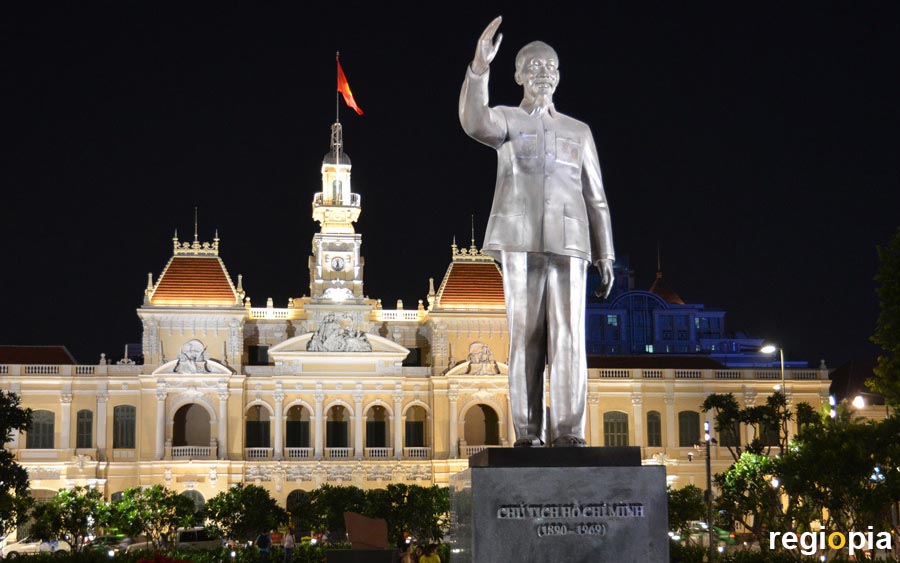
Ho Chi Minh Statue
Infront of the former Town Hall of the French Colony, stands a monument of "Ho-Chi-Minh", former President of the "Democratic Republic of Vietnam". Ho-Chi-Minh died in 1969 and Saigon was named "Ho Chi Minh City" after the victory of the Communist North Vietnamese in 1975. The french town hall built in 1908 serves today as "seat of the peoples committee".
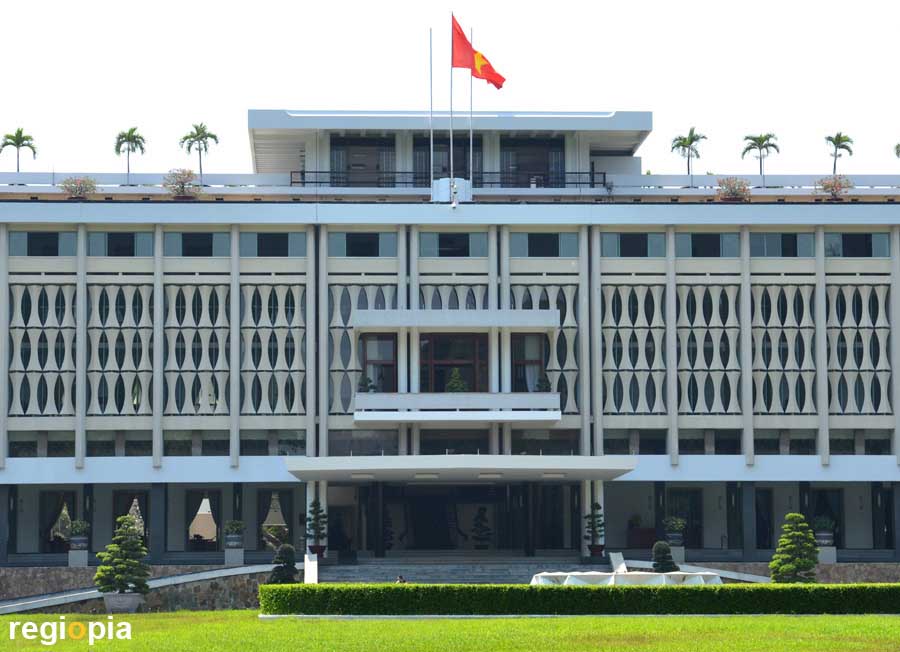
Reunification Palace
The former presidential palace is today called "Reunification Palace" (Hoi Truong Thong Nhat) because the reunification of North and South Vietnam was negotiated here. The palace was built in 1962 and served as the headquarters of South Vietnam. Many rooms of the palace look like the set of an old "James Bond movie" with an underground bunker. From here the last Americans were evacuated by helicopter when the communists invaded Saigon. The building became a symbol of the American defeat in the Vietnam War. Today the former presidential palace is one of the most famous sights of Saigon.
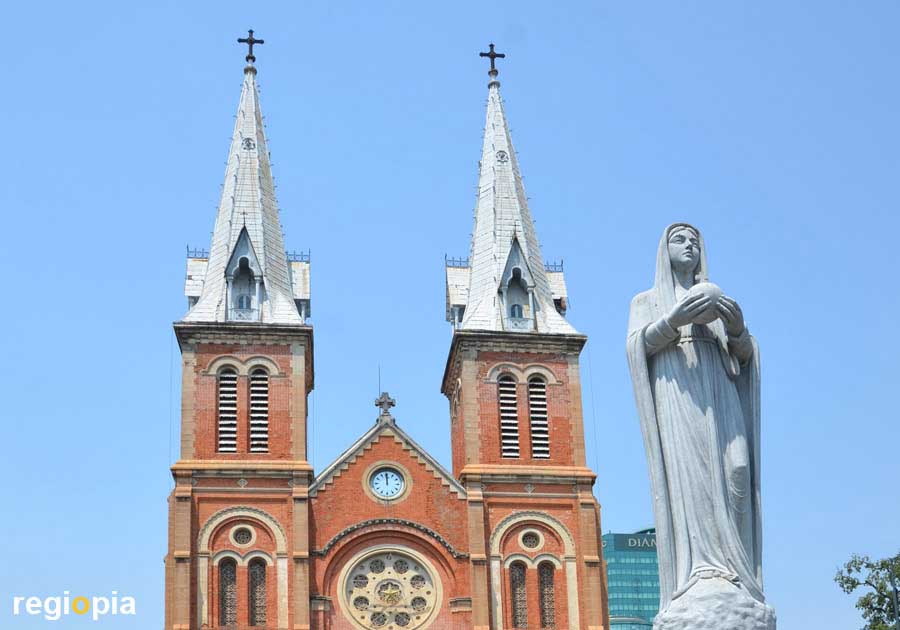
Cathedral Notre Dame Saigon
Notre Dame Cathedral is located in the center of Saigon. The Catholic church was built in 1880. The facade is decorated with red tiles from Marseille. The towers of the neo-Romanesque church are 40 m high and were for a long time the highest towers in the city. In front of the cathedral there is a statue of Mary with the inscription "Regina Pacis Ora Pro Nobis". (Intercession of the Queen of Peace)
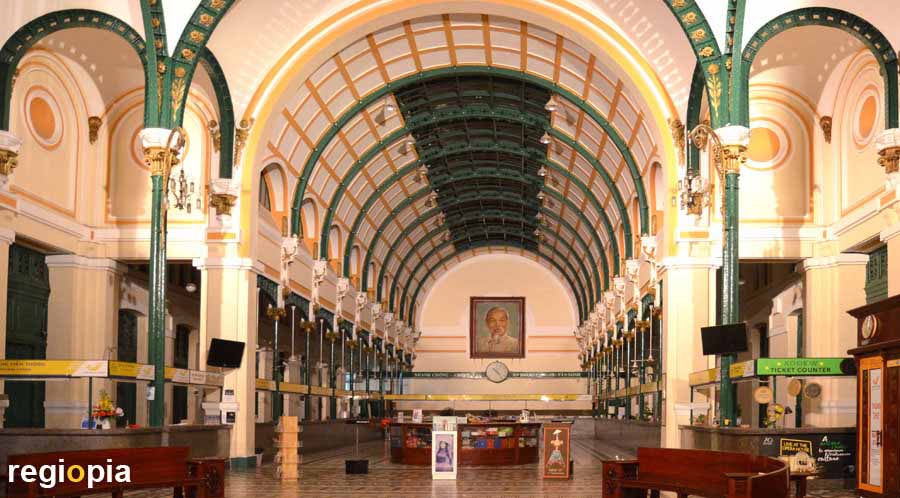
Saigon Post Office
The main post office of Saigon (Buu Dien Trung Tam) looks like a railway station. The post office was erected in 1891 by Gustave Eiffel for the French colonial administration. In the post office you can buy stamps and tourist consumer goods.
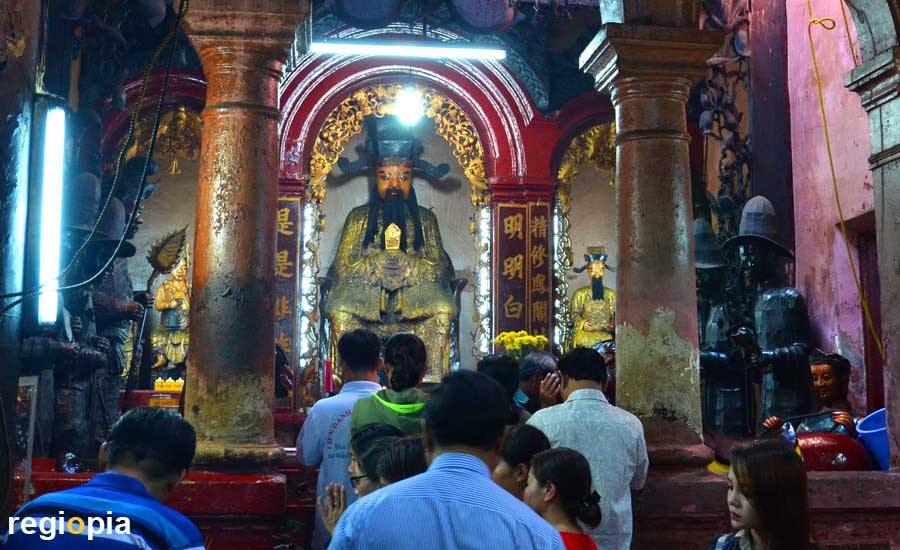
Temple of the Jade Emperor
The "Jade Emperor" Yu Di is the supreme divinity of the Daoists. He regulates all heavenly and earthly matters from his heavenly palace. The temple is one of the main attractions of Saigon. It is also known as "turtle temple" because on the left side of the entrance is a water pool in which one can "free" turtles. The interior is dark and full of valuable wooden carvings.
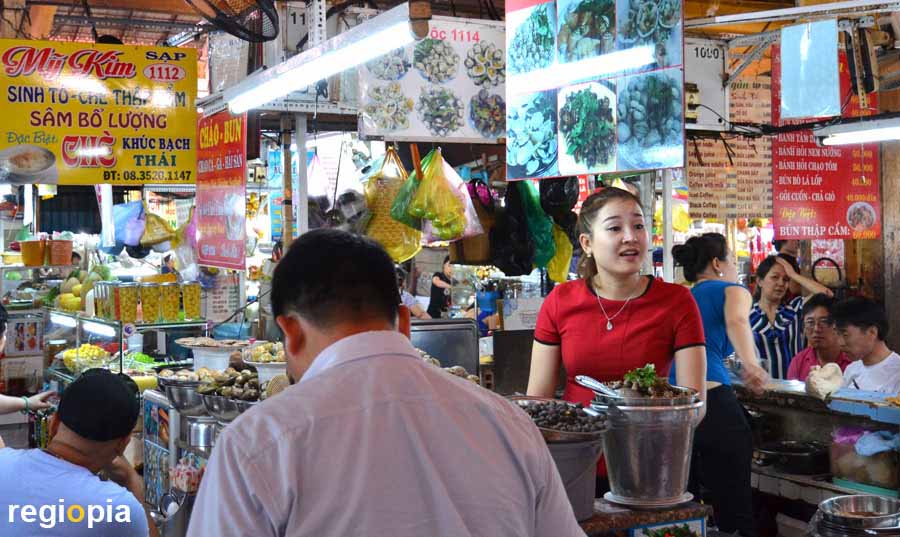
Ben Thanh Market
The "Ben Thanh" market was built in 1914 by the French colonial government and was then called Les Halles Centrales. Today it is a bustling market hall where you can buy everything from food, clothes, spices, kitchen utensils and trinkets. There are some small restaurants offering simple dishes.
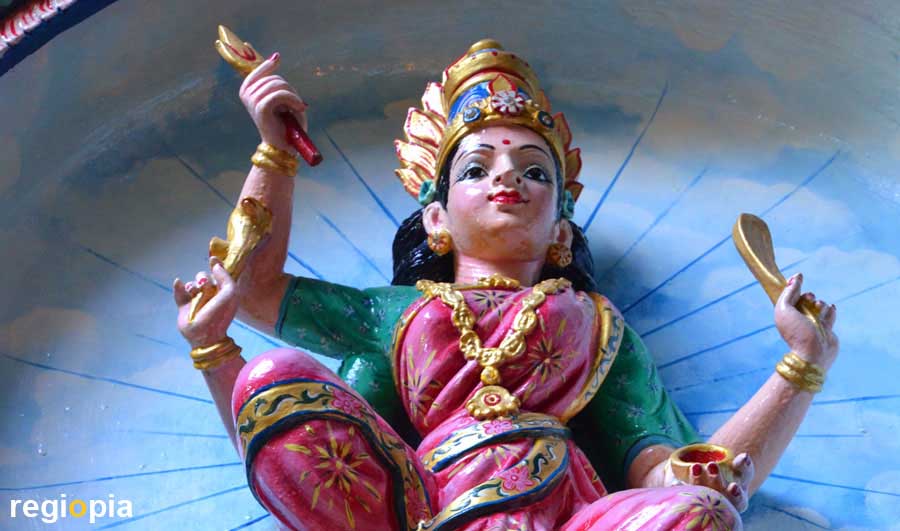
Miriamman Temple Saigon
The colorful "Miriamman Temple" was built at the end of the 19th century by the South Indian minority of Saigon. Miriamman is a Hindu mother goddess who can cure or cause illness and causes rain. She is especially revered by Tamils. If you enter the interior of the temple, take off your shoes. The sanctuary of Miriamman is located in the city center. On the outer walls are many other Hindu gods, such as Kaliyamman (photo).
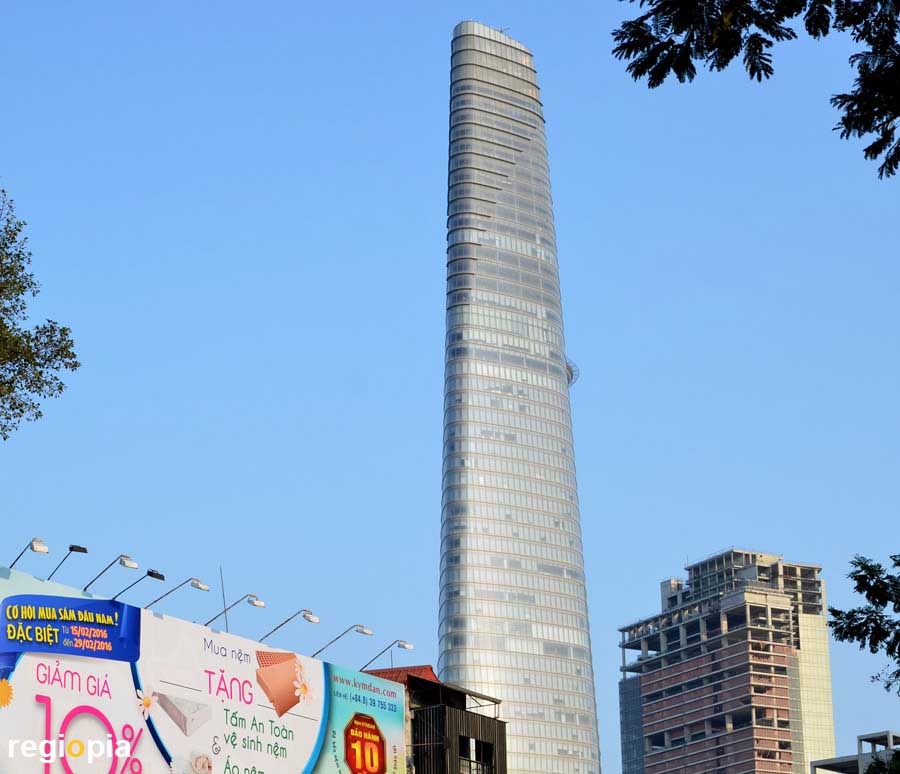
Skydeck Bitexco Tower
The Bitexco Financial Tower is currently the tallest building in Saigon with 262m. The office tower with the striking helicopter landing site was designed by New York architect Carlos Zapata. The building with 68 floors was completed in 2010. On the 56th floor there is a viewing platform with a spectacular panorama above Saigon.
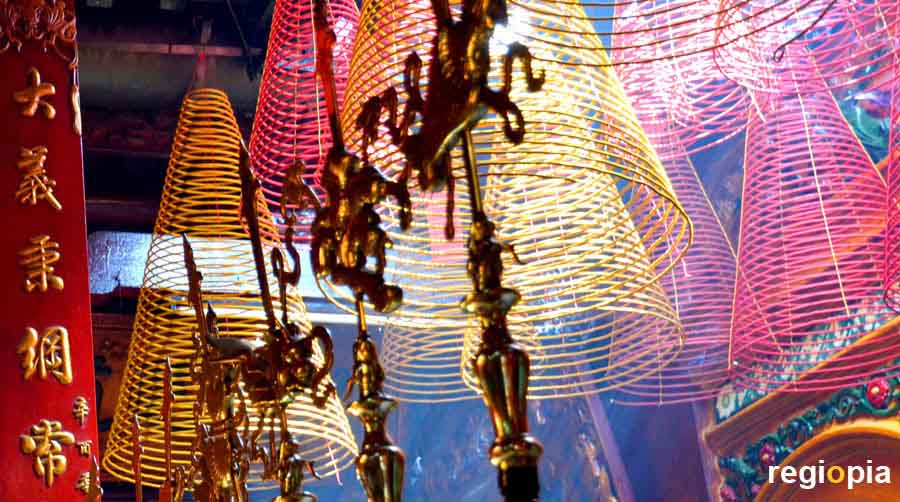
Phuoc An Hoi Quan Pagoda
The "Phuoc An Hoi Quan Pagoda" was built in 1902 by traders from the Chinese province of Fujian. The temple is dedicated to General "Quan Cong". "Quang Cong" is a loyal super warrior who easily disengages the red face. In the sanctuary he stands for clearing up problems. In the temple you will find halberds with symbols of the 8 virtues.
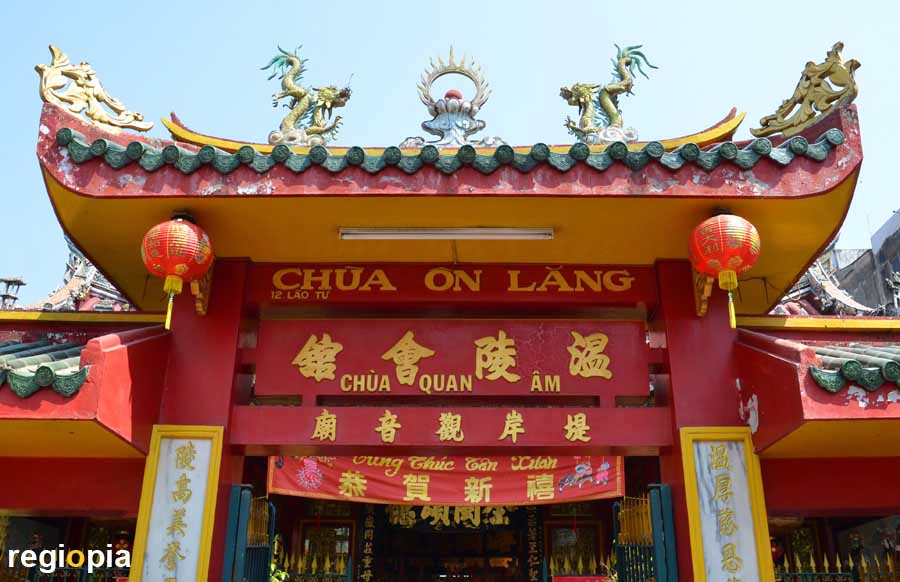
Quan Am Pagoda
The "Quan Am Pagoda" was built in 1740 as a meeting place of the Fujian Chinese. "Quan Am" is the Buddhist goddess "Guanyin" also called "Bodhisattva Avalokiteshvara". Quan Am can help anyone with her 1000 arms. In the temple, one can also pray to Daoist saints and light incense sticks.
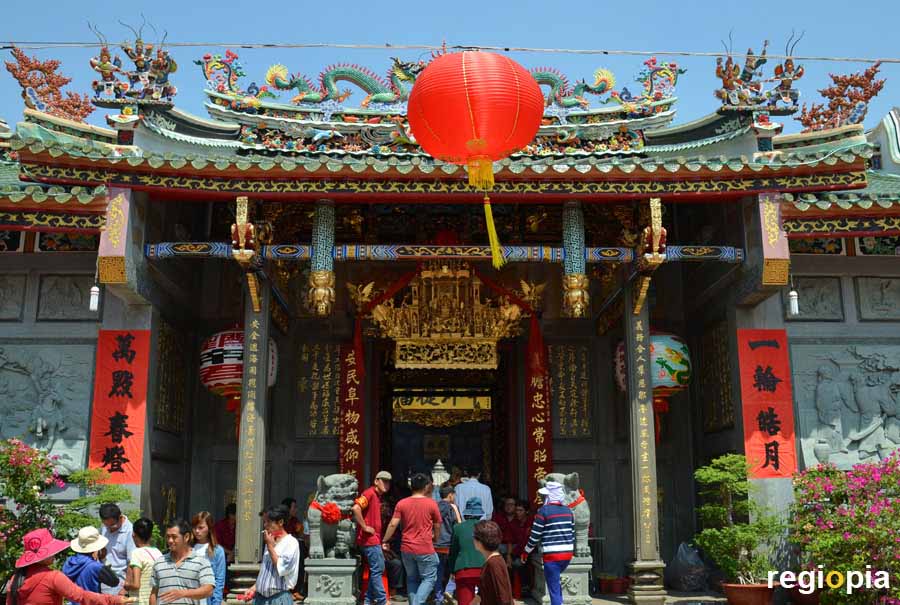
Ba Thien Hau Pagoda
"Thien Hau" is the Daoist goddess to protect sailors. "Thien Hau" (Pinyin: Tian hou) is the consort of heaven and is especially worshiped in southern China. This temple was built in 1760 by Chinese traders from Guangzhou. The roof decorations of the Ba Thien Hau Pagoda with animals and symbols from Chinese mythology are very beautiful.
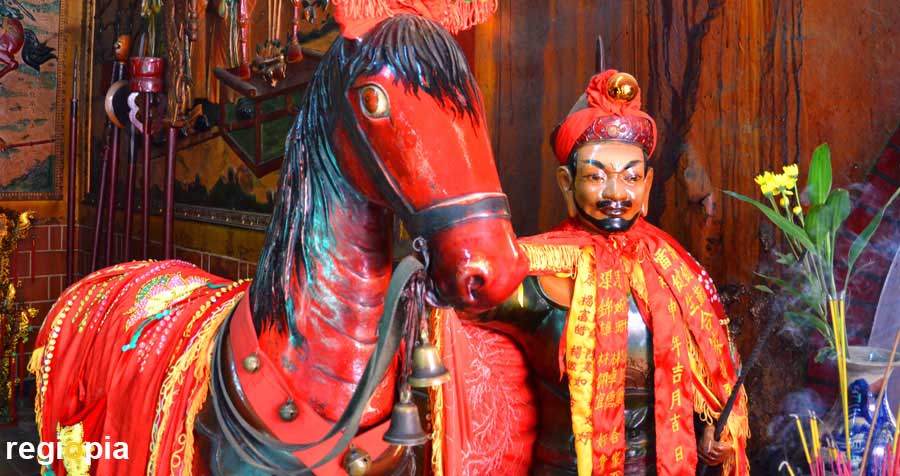
Hoi Quan Nghia An Temple
The "Hoi Quan Nghia An Temple" is another Chinese temple located nearby. Here the patron saint is "Quan Cong", his red horse and his helper "Nghia An" are worshiped. Quan Cong was a general from the time of the "Three Warring States" San Guo 184-280 AD. See also "Phuoc An Hoi Quan Pagoda". There is a sacred fan in the temple and many incense spirals hang in the courtyard.
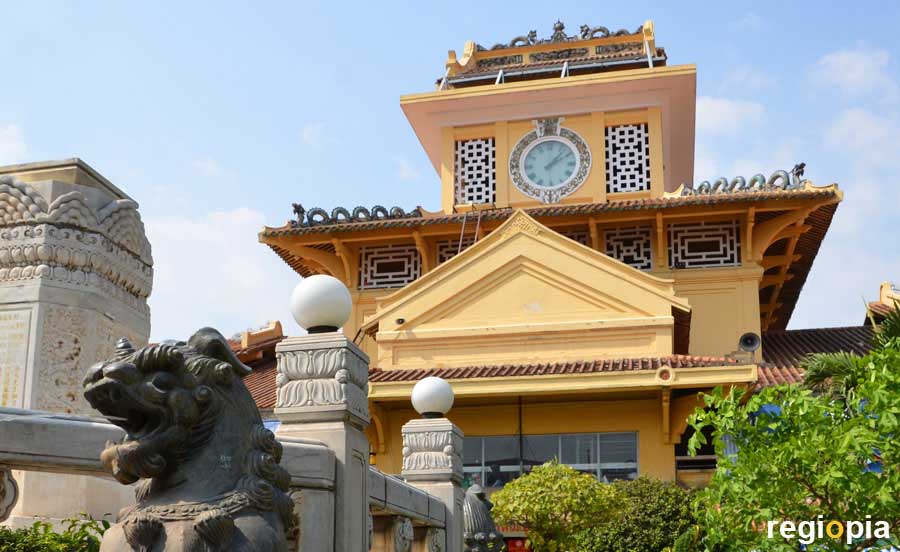
Binh Thay Market
The big market hall in Saigon's Chinatown is very special. In the middle of the market hall is a courtyard with a fountain and a garden. The building from 1920 although looks very European, but it was donated by a Chinese businessman. If you look closely you can see dragons on the roof ridge and other Chinese ornaments. Inside the market hall it is rather dark and overflowing with goods and people.
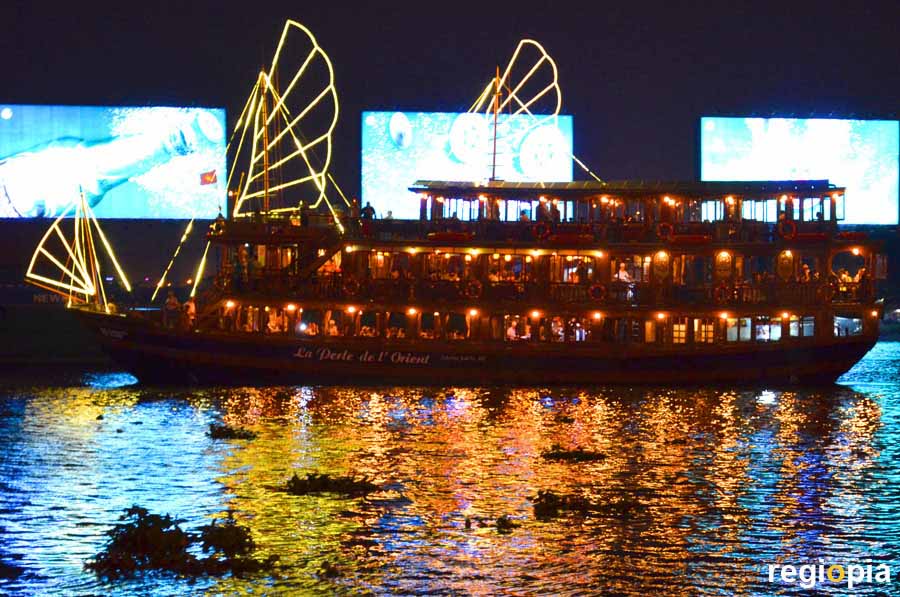
Saigon River Cruise
The "Saigon River" winds its way through the city center of Saigon and flows into the larger "Song Soai Rap" still in "Ho Chi Minh City". Best time for a river cruise is at night, when all the lights of the city illuminate the skyline of Saigon. Jetties are located in the extension of "Nguyen Hue" Boulevard.
Map Saigon Sights
ads
Travel Guide Saigon
Saigon or Ho-Chi-Minh-City?
Saigon is the largest city in Vietnam and also the economic center of the country. Saigon was renamed "Ho Chi Minh City" in 1976, but the first district is still called "Sai Gon". Since the name "Ho Chi Minh City" is a bit bulky and "Karl Marx Stadt" or "Leningrad" had no long history, we continue to call the city "Saigon". The official name of the city is always abbreviated "Thanh Pho Ho Chi Minh" becomes "TP.HCM" and "Ho Chi Minh City" becomes "HCMC". For those who want to do it right, the official name is "Thanh Pho Ho Chi Minh".
ads
Attractions in Saigon
City Center
Saigon or "Ho Chi Minh City" is a very large city with over 8 million inhabitants and an area of 2095 km². Two areas are worth seeing for tourists. The first area is the colonial city center of the former French colony on the Sai Gon River. Most of the sights are located here, such as the Ho Chi Minh Monument, the Hotel de Ville, the cathedral, the Reunification Palace or the post office. This area is also the center with office towers, luxury shopping streets and international hotels.
Cholon (Quan 5)
"Cholon" means "Big Market" and used to be a settlement of Chinese merchants. Today there are many Buddhist and Daoist temples established by Chinese traders. The large market hall "Binh Tay" is also located in Cholon.
ads


